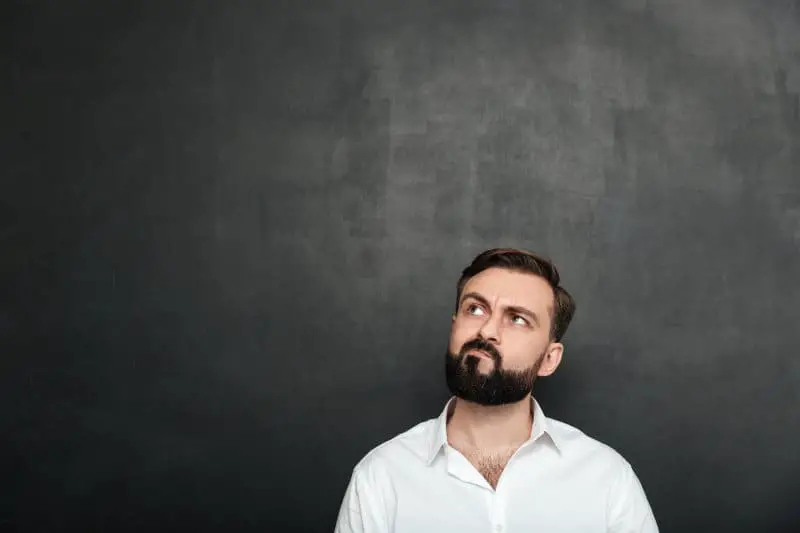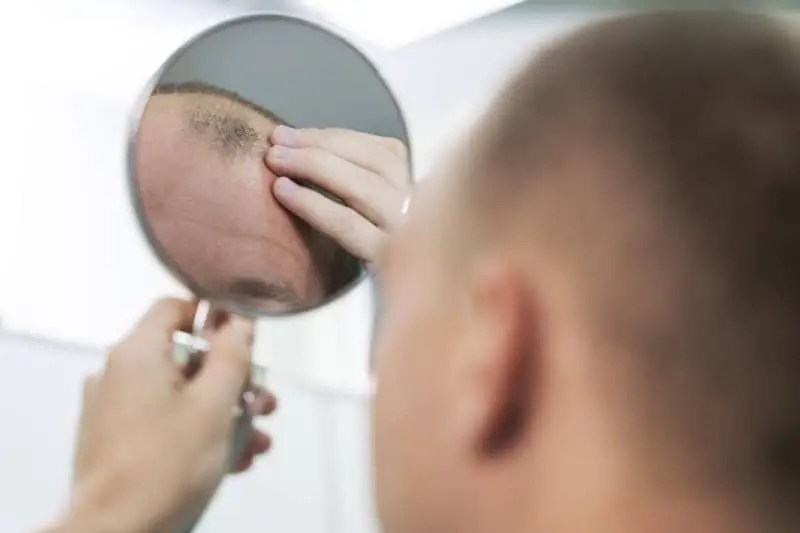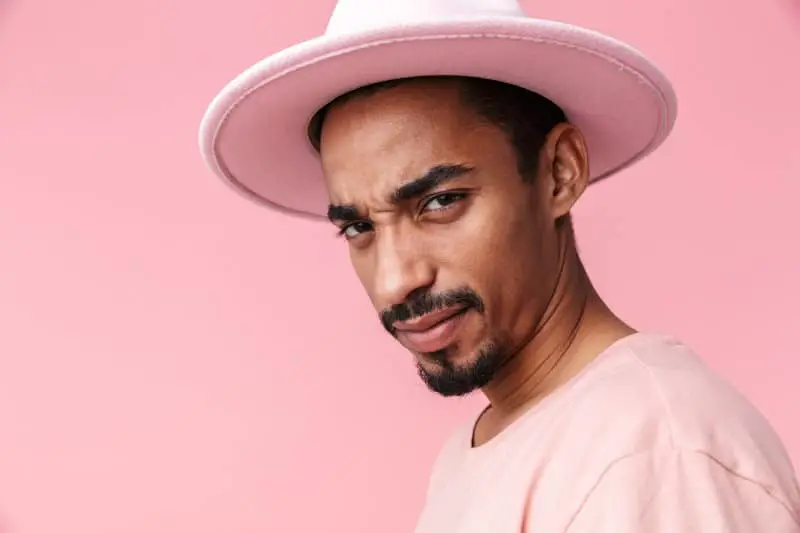There’s so much conflicting information on the Internet. It’s hard to make out what’s true and what’s not, especially when it comes to drugs that help reverse male pattern baldness, like Finasteride.
Not to mention all the confusion regarding its benefits and side effects. This got many men wondering: will Finasteride stop beard growth? Here’s the truth once and for all.
No, Finasteride won’t stop beard growth. Instead, it may slow it down or thin out already existing beard hair. This is because Finasteride inhibits the hormone DHT, which damages hair follicles on the scalp. When DHT levels drop, they may have an adverse effect on beard growth.
The good news is that finasteride has the potential to reverse pattern baldness in men with a success rate as high as 70%! Yet, it’s still a chemical drug, which means there will always be a risk of negative side effects and unfavorable reactions.
To help you get the full picture, we’ll walk you through the good, the bad, and the ugly. Everything you’ve ever wanted to know about finasteride is right here.
Let’s get started.
Will Finasteride Stop Beard Growth?

The short answer is no. You can keep growing your beard while taking finasteride. Yet, it won’t be as lush and thick as it could be without it.
Here’s why:
Facial hair growth relies on having healthy, well-balanced testosterone and DHT levels.
Despite playing an important part in stimulating the growth of both body and facial hair, DHT is a clear enemy of the hair on your head.
In fact, DHT and head hair have what the experts refer to as an ‘indirect correlation.’ In other words, fewer DHT levels mean more hair on your head and vice versa.
Yet, while your beard does need adequate levels of DHT, it’s not as dependent on it as it is on testosterone. You’ve probably seen lots of bald men sporting thick, luscious beards with ease.
So, what does this mean? Well, for starters, it means that finasteride can help revive scalp hair by reducing the amounts of DHT in your body. On the flip side, low levels of DHT may cause your beard hair to become thinner and more sparse.
Finasteride: Uses, Dosage, and Side Effects
Here’s a closer look at finasteride and how it can boost hair growth on your scalp. Yet, what kind of effect does it have on your beard?
Take a look.
What Is Finasteride?
Finasteride is an oral drug approved by the Food and Drug Administration (FDA) to treat a couple of male-related health conditions. The one that stands out the most is androgenetic alopecia (AGA).
The medicine used to treat AGA is sold under the brand name ‘Propecia.’ It’s also available as a generic drug that goes by the name ‘Finasteride.’
Generic drugs are usually more affordable than their brand-name counterparts. Yet, they may not always be available in the same strength as the brand-name drug.
Both work by reversing receding hairlines. Not only that, but it may also have a role in boosting new hair growth at the top of the scalp, but not on your body or face.
Bear in mind that only men should take finasteride. Women and children should never take it for any reason.
How Finasteride Can Treat Androgenetic Alopecia

While it can affect both men and women, it’s more common in men. Also known as male-pattern baldness, androgenetic alopecia is a genetic disorder that affects hair follicles.
Even though it’s genetically predetermined, AGA is a direct result of increased DHT levels. So, what is DHT exactly?
Dihydrotestosterone (DHT) is a male sex hormone that stimulates the development of male characteristics. It’s a byproduct of another male hormone: testosterone. Despite that, it’s considered the most potent of all androgens, or sex hormones, as well as the purest.
Scientists still aren’t sure why this happens, but sometimes, DHT will attach to androgen receptors on the hair follicles on your head. Then, for some reason, these androgens start to build up in the follicles, which forces them to close up.
Consequently, when hair follicles become blocked, they gradually start to shrink, killing off hair roots in the process. Inevitably, the process of hair loss begins, spreading into larger portions of the scalp, which is diagnosed as male pattern baldness.
Finasteride Dosage and Storage
According to researchers and medical experts, finasteride is one of the more effective methods of reversing male pattern baldness. It’s even more effective than topical treatments, especially for sensitive skin.
Yet, there’s a catch. Well, actually two.
One, you’ll only start to see results within 12 months. Some men notice results after the first six months. Yet, as a general rule, you shouldn’t expect it to go into effect until after close to a year.
Consult your physician if you don’t see any improvements after a year. Chances are, further treatment won’t yield any results, and your doctor will recommend that you discontinue treatment.
Two, you have to keep taking it. The truth is, the effect of finasteride on hair follicles will last as long as you’re taking the medicine.
If you stop taking it, nothing will block the DHT from attacking your follicles. As a result, you lose the effect finasteride had on the hormone, and consequently, you start losing your hair once again.
Prior to starting treatment, your doctor will do a couple of tests to make sure finasteride is ideal for you. Then, they’ll decide on the proper dosage for you depending on your age, other medical conditions you have, and if you suffer from any allergies.
The typical dosage is one mg daily, preferably with a glass of water. Try to take it at the same time each day with or without food.
As with most other drugs, finasteride should be stored somewhere away from heat, direct light, and moisture. The best thing is to keep it in its original container in a kitchen pantry or bathroom cabinet.
Finasteride Side Effects

Before taking finasteride, talk with your doctor about any allergies you may have. Also, make a list of any medications you’re currently on, which may prevent you from taking finasteride.
While finasteride does have some possible side effects, they’re not the same for everyone. At the end of the day, finasteride is relatively safe in improving hair growth as long as it’s taken under the supervision of your doctor.
Nevertheless, knowing what they are can help you stay prepared. Take a look at some of the most common short-term reactions of finasteride:
- Cold sweats
- Decreased libido
- Reduced ejaculate volume
- Slight testicular pain
- Allergic reactions, including itching or hives
Final Thoughts
So, will finasteride stop beard growth? No, but it may slow it down or thin out your beard hair.
However, some men don’t even notice the difference after using finasteride for several months. By maintaining a regular grooming routine, you can still rock a healthy-looking beard.
Even so, you should talk with your doctor before taking finasteride. After that, you can weigh your options. For example, do you want to stop male pattern hair loss but risk having a thin, patchy beard? Or do you put up with hair loss and potential baldness and enjoy a lush, thick beard instead?
The choice is yours!

